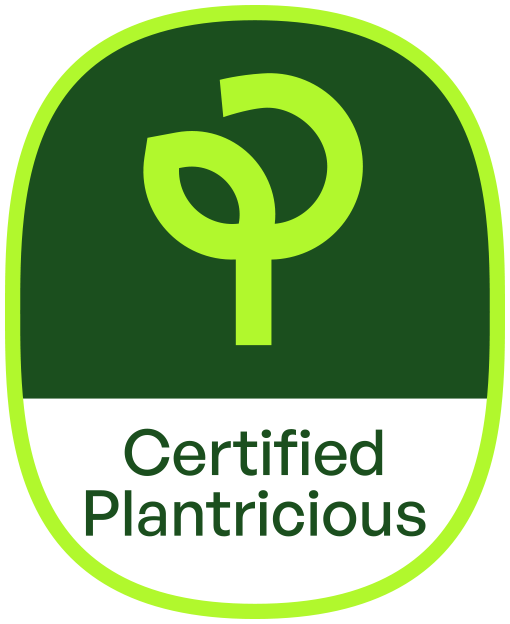
GUIDELINES
We set the standard
The only certification for prepared and packaged plant-nutritious foods
The Plantricious Guidelines were created with and endorsed by the nation’s healthcare experts leading the “food-as-medicine” movement.
Our Guideline Advisory Board
Michael Greger, MD
Author of The New York Times Bestseller, How Not To Die, and How Not to Diet, Founder of Nutritionfacts.org
Scott Stoll, MD
Founding Board Chairman of the Plantrician Project, Co‑founder of the PBNHC
Brenda Davis, RD
Internationally-acclaimed Registered Dietitian, Speaker and Author of Becoming Vegan
Certified
Plantricious
The seal healthcare practitioners trust to identify the prepared and packaged plant-nutritious foods they are prescribing.
Plantricious
Friendly
Identifying those foods that may be used as ingredients in, or part of, a Plantricious plate and would not be considered a whole meal on their own.
The Guidelines
Additional Acceptable Ingredients
-
Any additions to food that have been demonstrated through human clinical research to provide a health benefit are permitted, such as probiotics, FDA-approved dietary fibers, essential nutrients, etc. This can also include certain sweeteners that are not added sugar, yet enhance the sweetness of the food.
-
Ingredients not of plant or animal origin may be allowed if it does not exceed five percent of the formula (not including salt or water). This ensures that certified foods are majority whole food, plant-based (with plant goodness), and have a minimal amount of ingredients, like baking soda, natural colors, flavors, etc. to enhance the food experience. We have chosen not to create yet another “acceptable ingredient list” but instead based our decisions on the National Organic Program allowed substances lists of ingredients. Organic is not a requirement for Certification.
This includes, whole fruits, vegetables, grains, nuts, seeds and fungi. It does not include meat, dairy, fish, eggs or honey.
WHY? A predominantly whole food, plant-based diet may help to prevent, treat and possibly reverse the leading causes of death in the nation.
Acceptable forms of minimal processing include, but are not limited to, the following: cutting, mashing, grinding, dehydrating, marinating, milling poaching, steaming, boiling, braising, stewing, roasting, searing, sautéing, broiling, stir-“frying” without oil.
WHY? Minimally processed plant foods are treated in a manner that does not fundamentally alter their inherent nutritional value.
Prepare foods without oil using the following methods:
Sautéing/stir-“frying” – use water, vegetable broth or juice from fruit
Broiling – place food on silicone baking sheet
Baking – Substitute unsweetened applesauce, nut butters, silken tofu, bananas or pureed pumpkin.
WHY? You can get all of the oil you need to survive from whole food sources like nuts, seeds and avocados. Also, oils increase calories of a food but do not provide the inherent nutrition found in minimally processed, whole plants.
*Plantricious Friendly allows for 3% or less 100% plant-based oil
May not contain added sugars* as defined under the FDA Regulations. Instead use sugar found naturally in whole plants, such as dates, apples, bananas and fruit purees.
WHY? Americans are over-consuming added sugar, up to an extra 350 empty calories a day. Added sugars lack the nutrients, including fiber, that whole plants provide.
*Plantricious uses the FDA definition of added sugars.
Use whole food plants, make your own sauces and dressings, read labels or look for the Certified Plantricious or Plantricious Friendly seals.
WHY? The more whole, plant foods we eat, that do not require artificial additives and preservatives, the healthier our bodies will be.
Boost the flavor with the addition of more herbs and spices, garlic and onion, squeeze or zest of citrus or vinegar.
More than 75% of daily sodium consumed comes from processed and restaurant foods.
WHY? Americans are over-consuming sodium. The American Heart Association recommends we eat no more than 2,300 mg sodium per day (adults). Based on a 2,000 calorie diet, this ratio will help keep you close to the ideal range.
Plants are THE source of fiber in the diet. Adding more vegetables, fruits, whole grains, nuts, seeds and legumes make it easy to add fiber to any dish.
WHY? Less than 3% of Americans are getting the recommended levels of fiber; primarily due to the low consumption of plants. Consuming fiber has been associated with a healthy digestive system, reduced risk of obesity, heart disease and more.







